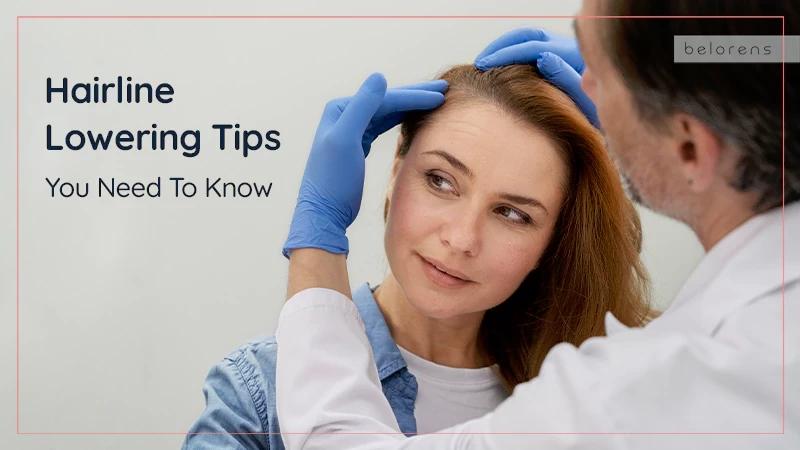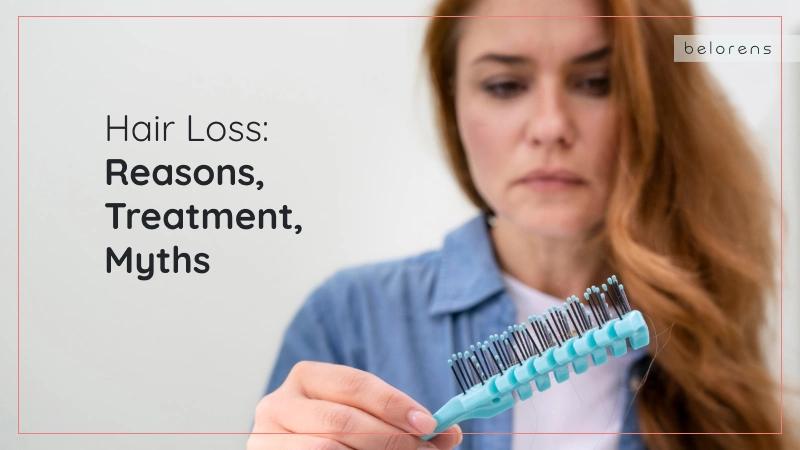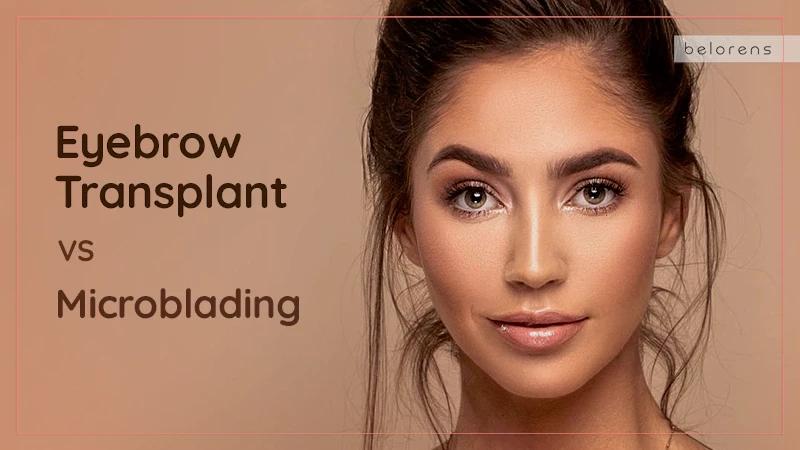Published on 20 Jan 2024 | Last updated on 26 May 2024
Hair Transplant Recovery Guide
- ByMedical Content Team
- Medically Reviewed byDr. Sabine Kulhanek
Fact checked
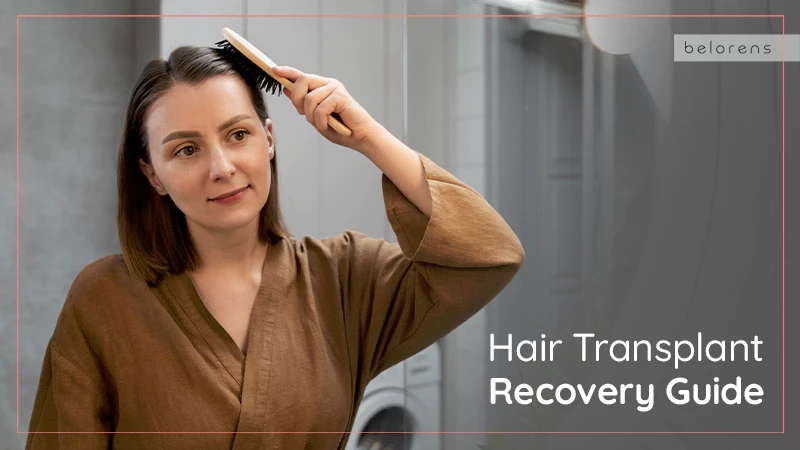
Cosmetic surgeries with immediate results are fun. You go to the operating room, probably go to sleep, and wake up a different person whom you can’t see perfectly, probably covered with bandages, swelling, and bruising but you can feel it. Then in a week or two, you start to see clear changes, and as each day passes you get to see the results develop to their best. However, this is not the case with hair transplants. It takes months to see the results. Disappointing, huh?
Sure, you also come out a different person when you’re getting out of the operating room of a hair transplantation procedure, you’re probably bored and tired, have a bandage around your head, and have been trained to be much more patient. You’ll go through a recovery from the surgery and wait for about 3 months for the initial results to show up and a bit more for them to look like what you’ve been expecting. But the results are actually worth it. Remember it is all about planting, so you should wait and take good care for the planted seed to grow and show up perfectly.
This hair transplant recovery guide gives you a clear idea of what to expect after your procedure and what to do or not to do for a better recovery and result. So, keep reading.
Quick Hair Transplant Recovery Tips
- Take plenty of rest on the first day
- Keep your head elevated as you sleep
- Stay away from alcohol, nicotine, and aspirin for a while after the surgery
- Wash your hair daily for 10 days, starting 48 hours after the procedure
- Use the shampoo prescribed by your doctor or baby shampoo for washing your hair
- No strenuous activity and sexual intercourse for 10-14 days
- Avoid touching and scratching your head in the transplanted area even when you’re washing your hair
- Include foods high in protein, vitamins, iron, zinc, and omega-3 in your post-op diet
- Hair transplant recovery is lengthy and it takes time for the final result to show up. So be patient and don’t panic if your hair falls out. This is normal. It takes 2-3 months for the new hair to start to grow
Recovery Timeline
We’re going to walk you through the post-hair transplant journey to see what happens on the first day, week, month, and year.
First Week
The first week following the procedure is very critical for proper recovery. As a general rule, you should keep your hands away from your head and leave your head alone during the first week. Strictly avoid playing, touching, and scratching the treated areas, both the donor and the recipient site. Playing with the transplanted hairs may lead to knocking your transplanted hair grafts out of place or causing infection in the treated area.
Make sure you sleep on the back or side with your head elevated using a few pillows or recliners in a way that the torso is kept in a 45-degree inclination. You may also want to use a reclining chair to find the standard sleeping position more smoothly.
Mild pain and discomfort are common in the first week but can be relieved with painkillers prescribed by your doctors. Don’t take any medications containing aspirin in the first five days following the surgery as their blood thinning effect can increase the risk of bleeding and complicate the recovery.
A bit of swelling is also normal during this period. You may expect to experience mild scabbing which disappears in the second week.
Day 1 (Day of Surgery)
Your first day may be different based on the hair transplant method you’ve been through.
However, in either case, you won’t be allowed to leave the hospital and drive alone as you’ll be under pain medications after the surgery. So, make sure you’ll have someone to help you discharge from the hospital and take you home. You’ll be discharged with a bandage around your head and a post-op package in your hand (probably in your companion’s hand though) filled with necessary items and instructions to help you take good care of yourself during the recovery time.
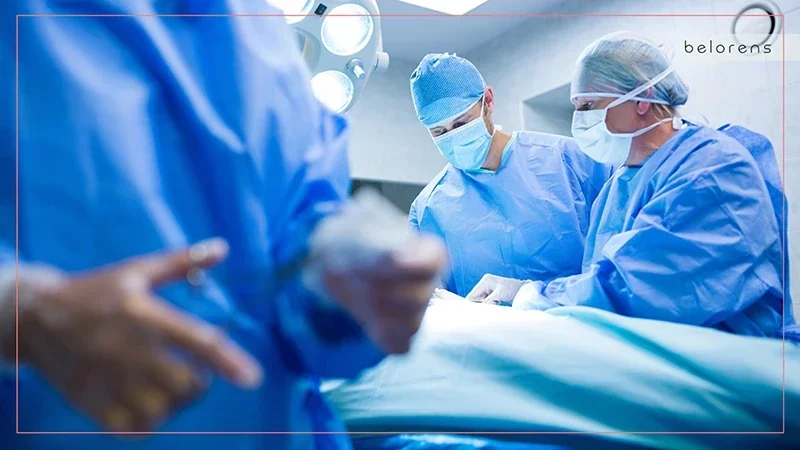
You must start to rest as soon as you get home and keep away from any activity.
An FUE leaves you with very small incisions on the donor areas, usually, the back and sides of the head, where have been most probably shaved.
An FUT, on the other hand, comes with sutures on the donor area, the back of the head, where the linear incision has been made to remove the hair-bearing strip.
Also Read: Comparison of FUT and FUE
Day 2-4
You’ll experience some pain which is manageable by the painkillers and it’ll be mainly gone by day 4. So don’t hesitate to call your doctor and ask for professional help if you feel excessive pain. Swelling, on the other hand, starts from day 2-3 and reaches its highest level on the fourth day. There are usually cold compresses in your hair transplant after-care package which are recommended to be used for reducing swelling. You probably develop some tiny little crusts from day 2 which turn pinkish about day 4.
It’s fine to wash your hair 2-3 days after the procedure but make sure you follow your doctor’s instructions while washing your hair. You may use a special shampoo prescribed by your doctor, however, baby shampoo is usually fine. Avoid scratching the transplanted area, You should instead gently tap on your head and use low-pressure water to wash off the foam. Also, be quite gentle while using the towel to dry your hair. Use a soft towel and simply put it on and off your head instead of rubbing it. Otherwise, you risk dislodging your transplanted grafts.
Day 5-7
The transplanted hairs are much more stable by this time, having adapted to the scalp, they won’t be easily dislodged. FUT cases will notice an improvement in the tightness of the donor site’s skin. However, they’ll still have the sutures. The scabs may persist and will be accompanied by mild itching which is a good sign; it shows that you’re healing.
As patients undergoing the FUE method only have very small incisions with no sutures, their donor sites will have healed by this time.
You can safely go back to your normal activities, but no strenuous activities until 4 weeks. In case you feel embarrassed being seen in public with a shaved crusty head, you may want to wear a loose-fitting hat that does not tightly contact your transplanted area. Still, you need to discuss it with your doctor.
Week 2-4
In the second week, you’ll finally get rid of the scabbing and crusting which leaves you with a pink scalp. However, if you still see some scabs, don’t try to remove them. Just give it time and keep following your hair care routine which is instructed by your doctor and they’ll disappear eventually. The second week is also when the transplanted follicles set foot in the telogen phase which is also known as the resting phase and hairs start to fall out. The shock hair loss (telogen) continues until week 8 and is pretty normal. It will then lead to the growth of new healthy hairs.
The sutures in FUT cases can be removed by the second week as the wound will be fully closed.
Follicle inflammation may occur in some patients. The condition is called folliculitis and is revealed by the appearance of some pimples on the donor or recipient site. So if you notice pimples, make sure you contact your doctor for help.
Also Read: How to Treat Hair Loss in Women
Months 2-3
Sooner or later, you’ll finally get to see the very first sight of the new hairs growing in this stage which seems like a fine texture at the beginning but it then starts to grow thicker and longer and you can start to groom your hair. However, you need to wait for at least 3 months before your hair reaches its full thickness.
The scar in FUT cases has taken its final shape by this time.
Months 4-6
About 60% of your transplanted hairs will have grown by this time. You can enjoy much thicker and longer hair at this stage which gives you more hairstyle options. You can even consider dying your hair if you wish, provided that your recovery has gone as predicted.
Months 7-12
This is when you can judge the result of your hair transplant procedure, be it an FUT or an FUE, up to 90% of the transplanted hairs must have grown by this time.
One Year Onward
About 12-18 months after the procedure is when you can see the final outcome of your hair transplant procedure. However, each patient is unique and may be different from another. Accordingly, you’d better have frequent check-ups during your recovery to make sure everything is going well. In case you can’t have regular in-office visits, sending your doctor photos of your hair condition at each stage can help a lot.
Hair Transplant Recovery Tips
Here’s a list of important instructions after a hair transplant that helps you have a smoother recovery:
Sleeping Tips
Resting is a vital factor in the healing process. So make sure you’ll get complete rest on the first day. Continue to get enough quality sleep in your recovery period. Sleep on your back or sides and try to keep your head elevated in the first 2-3 days using a few pillows. Try not to sleep on your stomach as you may have your transplanted area rubbed against the pillow which increases the risk of graft dislodging and infection.
Washing Tips
Hair and scalp hygiene is very important in hair transplant aftercare. Therefore you need to regularly wash them and keep your hair and scalp clean. Otherwise, you’ll increase the risk of complications such as pilonidal cysts and pimples on the scalp. You can start washing your hair 2 days after the procedure. However, considering the fact that the transplanted hair is not as strong as your natural hair, you’ll need to be much more cautious when it comes to washing your hair.
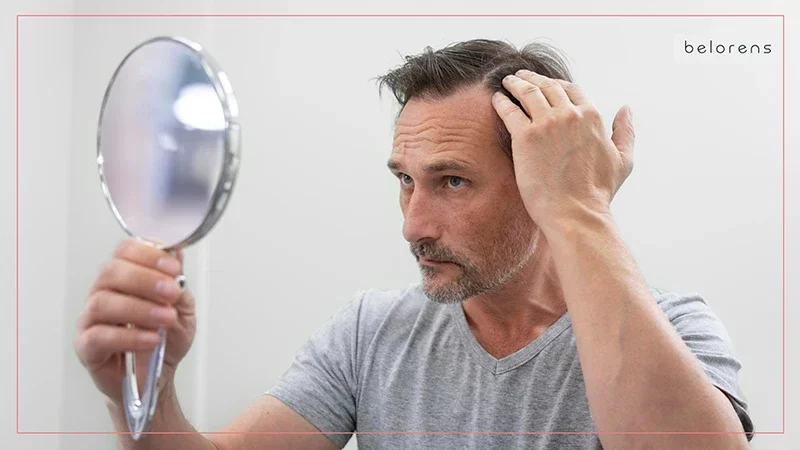
While baby shampoo is always a good option as it’s free of harmful substances, your doctor will prescribe the best shampoo in terms of the PH, composition, and antioxidants of the shampoo considering your hair's nature and how greasy it is. Your doctor will instruct you on how to wash your hair after hair transplantation. Yet, we’ll go through some basics of the guide on how to wash your hair after this procedure. We can divide the washing process into 3 steps:
- Using the lotion: Gently apply the prescribed lotion on the transplanted area and leave it for 40 minutes. Then use low-pressure and slightly warm water to wash the lotion off. You can reduce the lotion time to 20 minutes in the next sessions of washing.
- Washing your hair using the shampoo: Just like the lotion, apply the prescribed shampoo or the baby shampoo quite gently and leave it for 3 minutes. And again use not-so-hot water with low pressure to wash the foam off.
- Drying your hair: Do not use a hair dryer. Instead, use a soft towel or some tissues. Tenderly put it on your head without applying any pressure to absorb the excess water. You can repeat this by gently putting the towel on your head but strictly avoid rubbing it against the transplanted area and let the head dry on its own without the use of a hair dryer
Here are some tips for washing your hair properly after the hair transplant, especially for the first 10-14 days (one wash per day), you can then return to your regular washing afterward:
- Make sure the flow of water does not directly hit your head in the transplanted area as it could damage your procedure result. You can put your hands against your head to reduce the water pressure
- Strictly avoid rubbing or scratching your scalp while washing your head as it can get the transplanted hairs out of place. Apply shampoo and lotion through gentle tapping
- Don’t use a hair dryer for drying your hair. Except for gently putting a soft towel on your head to absorb the water, let your hair dry on its own after washing
- While you can tenderly massage the donor area you must avoid massaging the recipient area
Also Read: Hairline Lowering with Hair Transplant vs Scalp Advancement: Everything You Need to Know
How to Reduce Swelling?

You can manage the swelling in your forehead using the following tips:
- For the first 2-3 days after the procedure, keep your head elevated at a 45-degree angle as you sleep
- In case you don’t suffer from sinusitis, you can apply a cold compress on your forehead the first night after the procedure. Do not leave the compress on your head for too long, usually, 20 minutes is recommended for every 1-2 hours
- Stay away from ice cream, alcohol, and medicines containing aspirin for 3-5 days
What to Avoid after a Hair Transplant?
There are some don’ts and things to avoid after the hair transplant procedure to experience a smoother recovery and achieve better results:
Smoking
You may have heard a lot about the negative effects of smoking on the healing process. In fact, cigarettes or any tobacco products releasing nicotine could adversely affect the process of wound healing and recovery. Moreover, nicotine is also detrimental to the hair follicles and may increase hair loss. This is why you’ll be advised to stop smoking 10 days before the hair transplantation procedure and keep going until two weeks following the procedure. Of course, the more you keep away from nicotine, the better.
Exercise
Remember not to do any kind of activities on the first day after the procedure, even very light ones. You must also stay away from exercise and strenuous activities for the following 10-14 days.
Sun Exposure
Excessive sun exposure can slow down the healing process. So try not to be exposed to the sun for too long in the first few weeks.
Also Read: Sun Protection: All You Need to Know About
Wearing Hats

Remember how we talked about not touching and rubbing your hair? This is just the same as wearing a hat. The pressure coming from the contact of the hat and transplanted hair can damage and displace the recently-transplanted grafts.
Moreover, wearing hats can lead to an increase in sweating which is also detrimental for the transplanted hairs. Therefore, avoid wearing hats in the first few days after the procedure. If you insist on not being seen with a shaved and treated head in public, you can wear a loose-fitting hat. But you need to wait at least 5 days before wearing such a hat and make sure to check it with your doctor.
Sexual Intercourse
You’d better avoid sexual intercourse for about 10 days after having a hair transplant procedure. While gentle sexual activities are fine, you should make sure your hair is not being touched or hardly rubbed against something.
Hair Transplant Complications and Side Effects
Major complications after hair transplantation are rare. As almost mentioned, the common side effects include swelling, bruising, bleeding, scabbing, itching, numbness or lack of sensation, inflammation of hair follicles, infection, shock loss, and unnatural-looking tufts of hair which may happen if the surgeon is not skilled enough. Yet, you need to contact your doctor to report any unusual signs you notice and ask for professional help.
In addition to reaching out to your doctor, consider checking out hair transplant discussion, where individuals share their firsthand experiences and insights related to hair transplantation.
The common side effects are often temporary and are gone in a few days or weeks and could be managed to some degree.
You can reduce swelling by sleeping on your back with your head elevated, using a cold compress, and avoiding ice cream and alcohol. Your surgeon applies a bandage on your head to control bleeding after the hair transplant surgery. The bleeding usually won’t continue for more than 24 hours. To prevent bleeding during your recovery, you’d better avoid alcohol and blood-thinning medicines such as aspirin. You can also prevent infections by keeping your head clean through regular washing as instructed and also avoiding touching the surgical area.
Experiencing patchy hair loss? Reclaim your hair's fullness with the most effective patchy hair loss solutions!
What to Eat after Hair Transplant Surgery?

A healthy diet is an important factor after a hair transplant procedure which speeds up healing and contributes to a smoother recovery. Make sure you follow a die that includes sufficient amounts of the following nutrients:
- Protein
- Iron
- Calcium
- Magnesium
- Zinc
- Vitamin B6
- Omega-3 fatty acids
Also Read: Fasting Before Surgery: What Are The Reasons?
Protein is an essential element for hair growth and healing wounds. Chicken, eggs, fish, dairy products, nuts, beans, and seeds are good sources of protein to be included in your diet after your hair transplant procedure. Omega-3 fatty acids can also promote hair growth and abound in seafood especially oily fish such as salmon, herring, and mackerel. Walnuts, avocado, and flax seeds are also good sources that could also be beneficial to vegetarians.
Hair Transplant Recovery FAQs
I’m going to have a hair transplant surgery, when can I return to work after the procedure?
You can go back to work as soon as one day after the procedure, provided that your work does not require heavy physical activities, exposure to the sun, or polluted air. However, it is much better if you can stay home and take 4-5 days off to get plenty of rest without any pressure and stress to speed up your healing process.
Is it normal if my transplanted hair falls out?
Yes. It is pretty normal to experience hair loss somewhere between the second and the eighth week when the transplanted hair enters the telogen phase. It takes about two to three months for the new hairs to start growing.
Should I take special medication after the procedure?
Yes, depending on the case, patients may need to take some medications and supplements usually including antibiotics to prevent infections, painkillers to relieve the pain and discomfort, anti-inflammatory drugs to fight inflammation, vitamin and iron supplements to speed up the recovery, minoxidil to promote hair growth, and so on.
Can I remove the bandage myself?
You’d better not. It is much better to leave it to your doctor to remove the bandage. However, if you can’t go back to the clinic for this purpose, make sure you ask your surgeon for precise instructions and follow them exactly as you remove the bandage.
Can I use a hair dryer?
No, you must wait for a month after having a hair transplant procedure before using a hair dryer. During this time, you should let your hair dry naturally after being washed.
Summery
In conclusion, while hair transplants require patience and a recovery, the complete recovery and final results of a hair transplant can take anywhere from several months to over a year. Factors such as individual healing ability, the extent of the procedure, and the specific technique used can influence the timeline. It's always best to consult with a qualified hair transplant surgeon for personalized information and guidance regarding the recovery process. Following post-transplant instructions, maintaining proper hair and scalp hygiene, and avoiding certain activities are essential for optimal outcomes. Despite temporary side effects, the natural and healthy hair achieved through a hair transplant is worth the wait.
